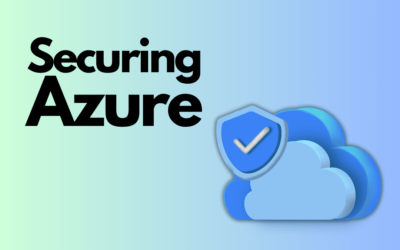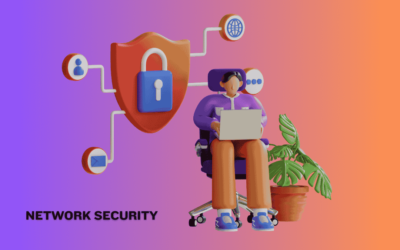Privileged Identity Management (PIM) is a critical aspect of cybersecurity that focuses on managing and securing accounts with elevated access rights within an organization. These privileged accounts, which can include system administrators, database administrators, and other high-level users, have the ability to make significant changes to systems and data. Because of their elevated permissions, these accounts are prime targets for cybercriminals.
If compromised, they can lead to severe data breaches, unauthorized access to sensitive information, and potentially catastrophic damage to an organization’s reputation and financial standing. At its core, PIM involves a set of processes and technologies designed to control and monitor access to these privileged accounts. This includes ensuring that only authorized users have access to sensitive systems, regularly reviewing and auditing access rights, and implementing strong authentication measures.
By effectively managing privileged identities, organizations can reduce the risk of insider threats and external attacks, thereby enhancing their overall security posture. Understanding the nuances of PIM is essential for any organization looking to safeguard its critical assets in an increasingly complex digital landscape.
Contents
- 1 The Importance of Securing Access
- 2 Best Practices for Privileged Identity Management
- 3 Implementing Privileged Identity Management Solutions
- 4 Common Challenges in Privileged Identity Management
- 5 Role of Automation in Privileged Identity Management
- 6 Compliance and Regulatory Considerations
- 7 Future Trends in Privileged Identity Management
- 8 FAQs
- 8.1 What is privileged identity management?
- 8.2 Why is privileged identity management important?
- 8.3 What are the key components of privileged identity management?
- 8.4 What are the benefits of implementing privileged identity management?
- 8.5 What are some common challenges in privileged identity management?
Key Takeaways
- Privileged Identity Management (PIM) involves managing and securing the access of privileged accounts within an organization.
- Securing access to privileged accounts is crucial for preventing unauthorized access and potential security breaches.
- Best practices for PIM include implementing least privilege access, regular access reviews, and multi-factor authentication.
- Implementing PIM solutions can help streamline access management and improve overall security posture.
- Common challenges in PIM include balancing security with usability, managing third-party access, and addressing insider threats.
The Importance of Securing Access
Securing access to privileged accounts is paramount for any organization, as these accounts hold the keys to the kingdom. When unauthorized individuals gain access to these accounts, they can manipulate systems, steal sensitive data, or even disrupt operations. The consequences of such breaches can be devastating, leading to financial losses, legal ramifications, and a loss of customer trust.
Therefore, organizations must prioritize securing these accounts as part of their broader cybersecurity strategy. Moreover, the importance of securing access extends beyond just protecting sensitive information. It also involves maintaining compliance with various regulations and standards that govern data protection.
Many industries are subject to strict regulatory requirements that mandate the safeguarding of privileged accounts. Failure to comply can result in hefty fines and legal consequences. By implementing robust access controls and monitoring mechanisms, organizations not only protect their assets but also demonstrate their commitment to regulatory compliance and responsible data stewardship.
Best Practices for Privileged Identity Management

To effectively manage privileged identities, organizations should adopt a set of best practices that can help mitigate risks associated with these accounts. One fundamental practice is the principle of least privilege, which dictates that users should only have the minimum level of access necessary to perform their job functions. By limiting access rights, organizations can significantly reduce the potential attack surface and minimize the risk of unauthorized actions.
Another best practice is regular auditing and monitoring of privileged accounts. Organizations should conduct periodic reviews of who has access to what systems and ensure that those permissions are still appropriate. Additionally, implementing strong authentication methods, such as multi-factor authentication (MFA), adds an extra layer of security by requiring users to provide multiple forms of verification before gaining access.
These practices not only enhance security but also foster a culture of accountability within the organization.
Implementing Privileged Identity Management Solutions
| Metrics | Value |
|---|---|
| Number of privileged accounts | 150 |
| Percentage of privileged accounts with multi-factor authentication | 80% |
| Number of privileged access requests per month | 200 |
| Percentage of privileged access requests approved | 95% |
| Number of privileged access reviews per quarter | 20 |
Implementing a Privileged Identity Management solution requires careful planning and execution. Organizations should start by assessing their current environment to identify existing privileged accounts and their associated risks. This assessment will help in determining the appropriate PIM solution that aligns with the organization’s specific needs and security objectives.
Once a solution is selected, organizations should focus on integrating it into their existing infrastructure seamlessly. This may involve configuring policies for access control, setting up monitoring tools, and training staff on how to use the new system effectively. It’s crucial to ensure that all stakeholders understand the importance of PIM and are committed to following established protocols.
Continuous evaluation and improvement of the PIM solution will also be necessary as threats evolve and organizational needs change.
Common Challenges in Privileged Identity Management
Despite its importance, organizations often face several challenges when it comes to managing privileged identities effectively. One common challenge is the sheer complexity of modern IT environments. With a mix of on-premises systems, cloud services, and third-party applications, tracking and managing privileged accounts across diverse platforms can be daunting.
This complexity can lead to gaps in security if not addressed properly. Another challenge is user resistance to change. Employees may be accustomed to certain workflows that involve elevated privileges, and introducing new PIM protocols can disrupt their routines.
To overcome this challenge, organizations must communicate the benefits of PIM clearly and provide adequate training to ensure that users understand how to navigate the new processes without compromising security.
Role of Automation in Privileged Identity Management

Automation plays a pivotal role in enhancing Privileged Identity Management by streamlining processes and reducing human error. Automated tools can help organizations manage user access more efficiently by automatically provisioning or deprovisioning accounts based on predefined policies. This not only saves time but also ensures that access rights are consistently enforced across the organization.
Additionally, automation can enhance monitoring capabilities by continuously tracking user activities related to privileged accounts. Automated alerts can notify security teams of any suspicious behavior or policy violations in real-time, allowing for swift responses to potential threats. By leveraging automation in PIM, organizations can improve their security posture while freeing up valuable resources for other critical tasks.
Compliance and Regulatory Considerations
Compliance with industry regulations is a significant driver for implementing effective Privileged Identity Management practices. Many sectors, such as finance, healthcare, and government, are subject to stringent regulations that require organizations to protect sensitive data from unauthorized access. Failure to comply with these regulations can result in severe penalties and damage to an organization’s reputation.
To ensure compliance, organizations must stay informed about relevant regulations and standards that apply to their industry. This includes understanding requirements related to access controls, audit trails, and incident response protocols. By aligning PIM practices with regulatory expectations, organizations not only mitigate legal risks but also build trust with customers and stakeholders who expect responsible data management.
Future Trends in Privileged Identity Management
As technology continues to evolve, so too will the landscape of Privileged Identity Management. One emerging trend is the increasing adoption of artificial intelligence (AI) and machine learning (ML) in PIM solutions. These technologies can analyze vast amounts of data to identify patterns and anomalies in user behavior, enabling organizations to detect potential threats more effectively.
Another trend is the growing emphasis on zero trust security models, which advocate for continuous verification of user identities regardless of their location within or outside the network perimeter. This approach aligns well with PIM principles by ensuring that privileged access is granted only after thorough validation of user credentials and context. In conclusion, as organizations navigate an ever-changing digital landscape filled with sophisticated threats, effective Privileged Identity Management will remain a cornerstone of cybersecurity strategies.
By understanding its importance, implementing best practices, leveraging automation, ensuring compliance, and staying ahead of future trends, organizations can protect their most critical assets from unauthorized access and potential breaches.
If you are interested in learning more about privileged identity management, I recommend checking out the article on Chetan Sroay’s blog. This article provides valuable insights and tips on how to effectively manage and secure privileged identities within an organization. It is a must-read for anyone looking to enhance their cybersecurity practices.
FAQs
What is privileged identity management?
Privileged identity management (PIM) refers to the process of managing and securing the privileged accounts and access rights of individuals within an organization. This includes controlling and monitoring access to sensitive systems, data, and resources to prevent unauthorized use and potential security breaches.
Why is privileged identity management important?
Privileged accounts have elevated access to critical systems and data, making them a prime target for cyber attackers. Effective privileged identity management helps organizations mitigate the risk of insider threats, external attacks, and data breaches by enforcing strict controls and monitoring access to privileged accounts.
What are the key components of privileged identity management?
Key components of privileged identity management include privileged account discovery, credential management, access control, session monitoring, and privileged user behavior analytics. These components work together to ensure that only authorized individuals have access to privileged accounts and that their activities are closely monitored.
What are the benefits of implementing privileged identity management?
Implementing privileged identity management offers several benefits, including improved security posture, reduced risk of data breaches, compliance with regulatory requirements, enhanced visibility into privileged account activities, and the ability to quickly respond to security incidents involving privileged access.
What are some common challenges in privileged identity management?
Common challenges in privileged identity management include managing and securing a large number of privileged accounts, ensuring seamless access for authorized users while preventing unauthorized access, addressing the complexity of managing privileged access across hybrid IT environments, and balancing security with operational efficiency.






0 Comments